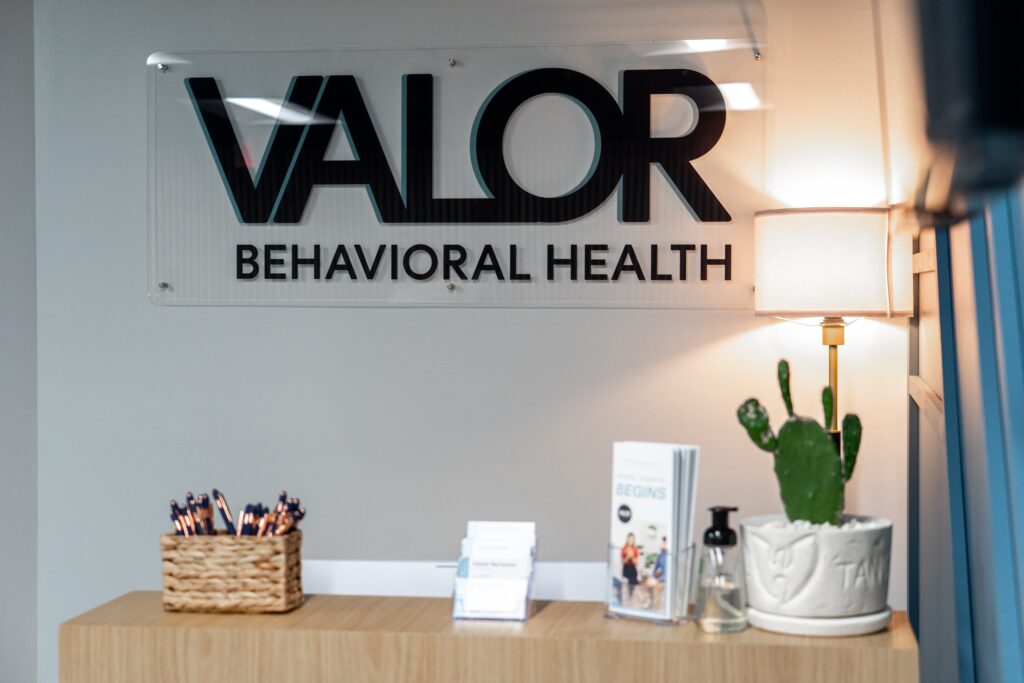Understanding mental health conditions is crucial for seeking appropriate treatment and support, especially when comparing dysthymia vs generalized anxiety disorder.
Two commonly confused conditions are dysthymia and generalized anxiety disorder (GAD). While both can significantly impact daily life, they are distinct in their symptoms, causes, and treatment approaches. This article aims to clarify the differences between dysthymia and GAD, helping you better understand each condition.
If you or someone you know is struggling with mental health issues, Valor Behavioral Health in Atlanta, Georgia, is here to provide the support and care needed for recovery.
What’s the Difference Between Dysthymia and Anxiety?
Dysthymia, or persistent depressive disorder (PDD), is a chronic form of depression marked by a low, dark, or sad mood that lasts most of the day for at least two years. Although it’s less severe than major depressive disorder (MDD), it is more enduring. Dysthymia’s primary symptoms include persistent sadness and loss of interest in daily activities.
On the other hand, generalized anxiety disorder (GAD) involves chronic, excessive worry about various aspects of life, such as health, work, and social interactions. This persistent worry is difficult to control and often results in physical symptoms like restlessness, fatigue, and muscle tension.
When looking at dysthymia vs generalized anxiety disorder the core difference between the two lies in their primary symptoms: dysthymia centers on a prolonged depressive mood, while GAD is characterized by ongoing anxiety and worry. Both conditions share common emotional symptoms, such as sadness and irritability, and can significantly disrupt a person’s ability to function. However, dysthymia is typically milder and longer-lasting, whereas GAD involves intense and pervasive anxiety. Proper diagnosis and treatment are crucial for managing these conditions and improving long-term physical and emotional health.
Symptoms of Dysthymia vs. Symptoms of Generalized Anxiety Disorder
Dysthymia, or persistent depressive disorder, manifests with a prolonged low mood or persistent sadness that lasts for most of the day, more days than not, for at least two years. Key symptoms can include:
- Persistent sad or low mood
- Loss of interest or pleasure in activities
- Fatigue or low energy
- Poor appetite or overeating
- Insomnia or hypersomnia
- Low self-esteem
- Difficulty concentrating or making decisions
- Feelings of hopelessness
People with dysthymia often experience a persistent feeling of emptiness or hopelessness, accompanied by changes in energy levels, appetite, and sleep patterns. A diagnosis requires experiencing a depressed mood most of the day for at least two years (one year for those under 19, where the mood can be irritability instead of depression). At least two of the listed symptoms must be present, and symptoms cannot disappear for longer than two months at a time.
Generalized Anxiety Disorder (GAD) is characterized by chronic, excessive worry about various life aspects. Its primary symptoms include:
- Excessive worry about various topics
- Restlessness or feeling on edge
- Easily fatigued
- Difficulty concentrating or mind going blank
- Irritability
- Muscle tension
- Sleep disturbances (trouble falling or staying asleep, or restless, unsatisfying sleep)
While some symptoms, such as fatigue and difficulty concentrating, overlap with those of dysthymia, GAD focuses on persistent anxiety and worry. The restlessness and tension associated with GAD contrast with the prolonged depressive state of dysthymia. Understanding these differences is crucial for accurate diagnosis and effective treatment.
If you or a loved one are struggling with Generalized Anxiety Disorder, call us today or visit our admissions page to learn more about how to start treatment.
Risk Factors for Dysthymia
Several factors can increase the risk of developing dysthymia, including:
- Genetics: A family history of depression or other mood disorders can increase the risk.
- Biological Differences: Changes in brain chemistry and structure may play a role.
- Personality Traits: Individuals with low self-esteem, being overly dependent, self-critical, or pessimistic are more prone to dysthymia.
- Environmental Factors: Prolonged stress, traumatic events, or chronic medical conditions can contribute to the development of dysthymia.
- Coexisting Mental Health Conditions: Having another mental health disorder, such as anxiety or substance abuse, can increase the risk.
Recognizing these risk factors can help in early identification and intervention, improving the outlook for those affected.
Treatment of Dysthymia vs Generalized Anxiety Disorder
Treating dysthymia, or persistent depressive disorder, typically involves a combination of therapy and medication, similar to the approach for major depressive disorder (MDD). Each individual requires a tailored treatment plan based on their specific symptoms, severity, and duration. The most effective treatments generally include:
- Psychotherapy: Cognitive-behavioral therapy (CBT) is particularly effective in addressing negative thought patterns and behaviors. Other beneficial therapies include psychodynamic therapy, holistic therapy, somatic therapy, interpersonal therapy, and the cognitive-behavioral analysis system of psychotherapy (CBASP), which integrates cognitive, behavioral, interpersonal, and psychodynamic components specifically for chronic depression.
- Medications: Antidepressants, especially selective serotonin reuptake inhibitors (SSRIs) and serotonin-norepinephrine reuptake inhibitors (SNRIs), are commonly prescribed. SSRIs work by increasing serotonin levels in the brain, which can help regulate mood, appetite, digestion, and sleep. These medications can significantly alleviate symptoms of dysthymia.
- Lifestyle Changes: Regular physical activity, a healthy diet rich in B vitamins and omega-3 fatty acids, sufficient sleep, and effective stress management techniques can improve overall well-being and help manage depressive symptoms.
- Support Groups: Connecting with others who understand the challenges of dysthymia can provide emotional support and coping strategies, enhancing the effectiveness of other treatments.
The combination of antidepressant medication and psychotherapy is often the gold standard for treating dysthymia. However, some individuals may find psychotherapy alone sufficient. By developing a comprehensive treatment plan tailored to individual needs, those with dysthymia can significantly improve their quality of life and achieve long-term recovery.
Outlook for Dysthymia
The prognosis for dysthymia varies. With timely diagnosis and appropriate treatment, many individuals see significant improvements in symptoms and quality of life. However, as a chronic condition, ongoing management is often necessary.
Success depends on adhering to prescribed medications, attending therapy sessions, and having a strong support system. Those with healthy cognitive functioning before dysthymia and who follow their treatment plans can expect a better prognosis. Challenges include having other psychiatric disorders, a history of trauma, poor family relationships, or developing dysthymia later in life, which can complicate treatment.
Regardless of severity, seeking professional help, obtaining a proper diagnosis, and following a treatment plan are crucial steps toward recovery. Continuous support and commitment to treatment are essential for long-term success.
Call Us Today For Support
Understanding the differences between dysthymia vs generalized anxiety disorder (GAD) is essential for seeking the right treatment and support. Valor Behavioral Health in Atlanta, Georgia, is dedicated to helping individuals overcome these challenges and achieve lasting well-being.
If you or a loved one is struggling with dysthymia or generalized anxiety disorder, we’re here to help. Our team of experienced professionals provides compassionate care and personalized treatment plans such as Partial Hospitalization (PHP), Intensive Outpatient (IOP), and Outpatient (OP) programs to support your mental health journey. Call us today or check out our admissions page to learn more about our services and start your path to recovery.













